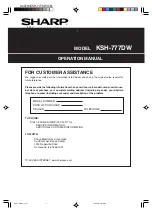
https://www.XPOtool.com
Item 63132
Page 6
The Tool Experts
07 2022-1
Before using the product
DANGER!
Fire and explosion hazard!
•
Regularly check the pressure reducer and the gas hose for leaks!
•
It is imperative that you replace a worn gas hose before each further use of the device!
The gas cooker may only be put into operation when
•
a faultless gas pressure reducer certified according to EN 497:1997 is installed,
•
a faultless/non-worn flexible gas hose is connected,
•
the gas hose has no kinks and does not touch other components.
In case one of these issues is not complied with, you may not use the gas cooker. Gas pressure reducers
and gas hoses are available from specialist dealers or from a gas cylinder supplier.
DANGER!
Fire and explosion hazard!
•
Do not store the gas cylinder at temperatures above 50
℃
.
•
Do not store the gas cylinder near fire or flammable substances!
In addition, the product may only be put into operation when
•
the gas cylinder used with it is undamaged,
•
the gas cylinder complies with the prescribed specifications (5, 8, or 11
kg capacity),
•
the gas cylinder is equipped with a protective valve.
Connecting the gas cylinder
Make sure that
•
the valve of the gas bottle is closed (if necessary, close it by turning it clockwise),
•
the existing external thread fits,
•
all burner controls on the gas cooker are switched off/set to off.
Check
•
the valve connection and regulators for damages and contamination (clean them if necessary),
•
the hose for damages and obstructions (replace it if necessary).
1.
To connect the pressure reducer to the valve, turn the union nut clockwise. Turn it by hand, for
solid tools can easily damage the union nut.
2.
Open the gas cylinder valve (anti-clockwise rotation).
3.
Now (before igniting the grill) apply a soapy solution to the connections to detect any leaks.
Leakage test
Although all gas connections of the gas cooker are checked for leaks before delivery, there may still be
leaks (e.g., due to damage during packaging or transport). Therefore, you must perform a complete
leakage test before commissioning and in regular intervals after the first use. A leakage test must also
be performed when there is gas smell.
DANGER!
•
Do not smoke during the leakage test.
•
Only carry out the leakage test outdoors and not near sources of ignition, e.g., electrical
appliances, open flames, or sparks.
•
Do not carry out the leakage test until all flames have gone out and the burner has been
switched off.


























